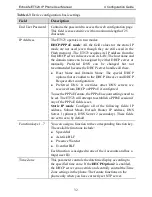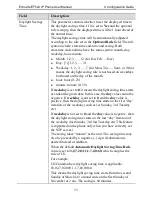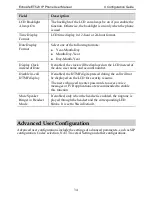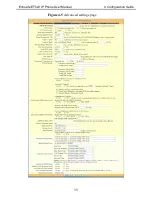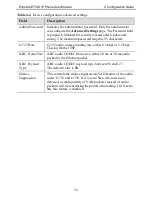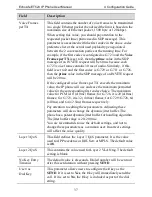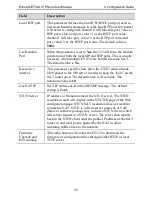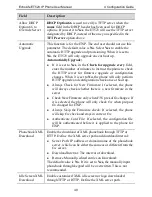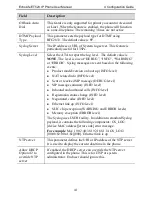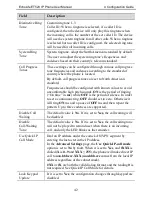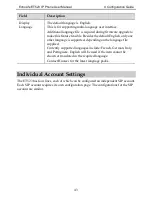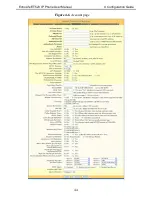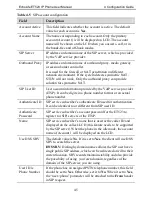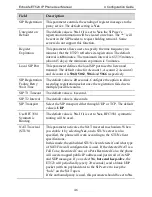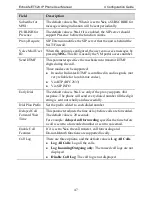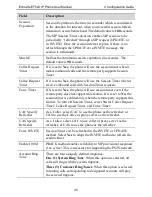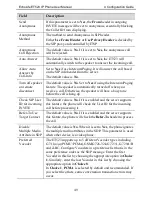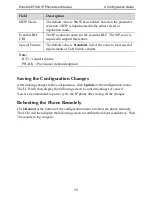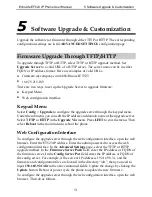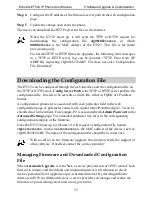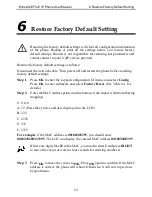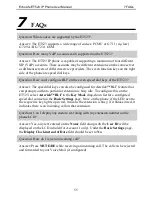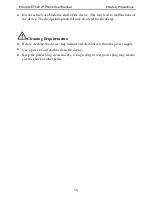
EchoLife ET523 IP Phone User Manual
4 Configuration Guide
46
Field
Description
SIP Registration
This parameter controls the sending of register messages to the
proxy server. The default setting is
Yes
.
Unregister on
Reboot
The default value is
No
. If it is set to
Yes
, the SIP user’s
registration information will be cleared on reboot. The “*”will
be sent in the SIP header to request bidding removal. Some
servers do not support this function.
Register
Expiration
This parameter allows users to specify the time frequency (in
minutes) that the ET523 refreshes its registration. The default
interval is
60
minutes. The maximum interval is 65,535 minutes
(about 45 days); the minimum expiration is 5 minutes.
Local SIP Port
This parameter defines the local SIP port used to listen and
transmit. The default value for Account 1, Account 2, Account 3
and Account 4 is
5060, 5062
,
5064
and
5066
respectively.
SIP Registration
Failure Retry
Wait Time
The default value is
20
seconds. Configure the option to allow
resending registration packet once the registration fails due to
multiple possible reasons.
SIP T1 Timeout
The default value is
1
second.
SIP T2 Interval
The default value is
4
seconds.
SIP Transport
Select the SIP transport either through UDP or TCP. The default
value is
UDP
.
Use RFC3581
Symmetric
Routing
The default value is
No
. If it is set to
Yes
, RFC3581 symmetric
routing will be used.
NAT Traversal
(STUN)
This parameter activates the NAT traversal mechanism. When
you enable it by selecting
Yes
, and a STUN server is also
specified, the phone will work according to the STUN client
specifications.
In this mode, the embedded STUN client detects if and what type
of NAT/Firewall configuration is used. If the detected NAT is a
Full Cone, Restricted Cone, or a Port-Restricted Cone, the phone
will use its mapped public IP address and port in all of its SIP
and SDP messages. If you select
No
,
but send keep-alive
, the
ET523 will periodically (every 20 seconds) send a blank UDP
packet (with no payload data) to the SIP server to keep the
“hole”on the NAT open.
If the outbound proxy is used, this parameter should be set to
No
.

